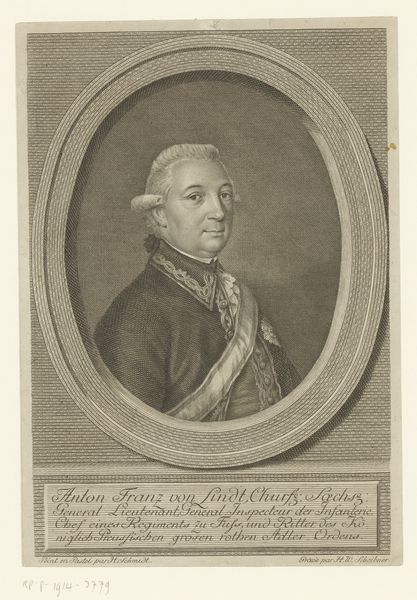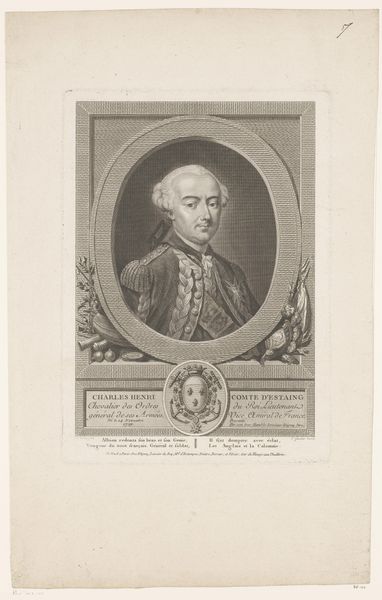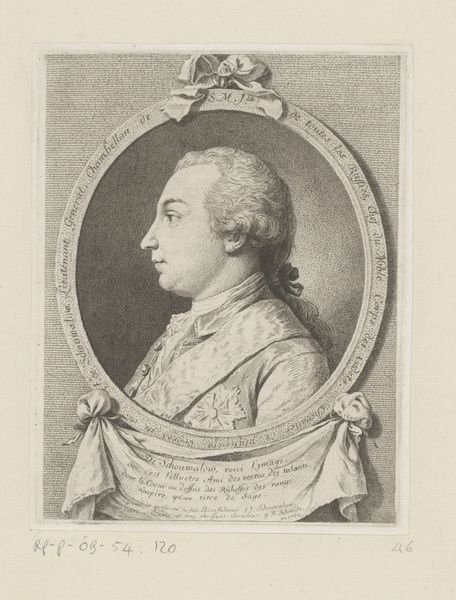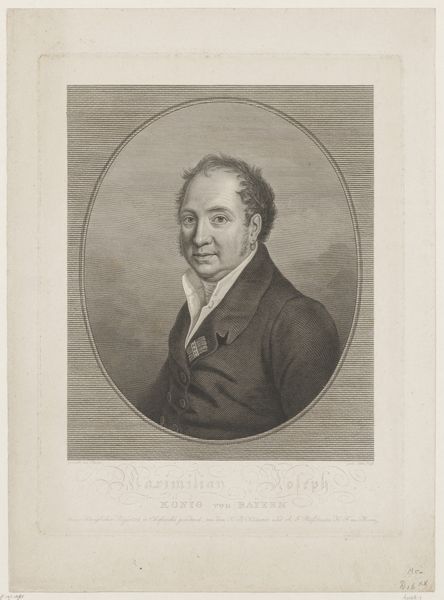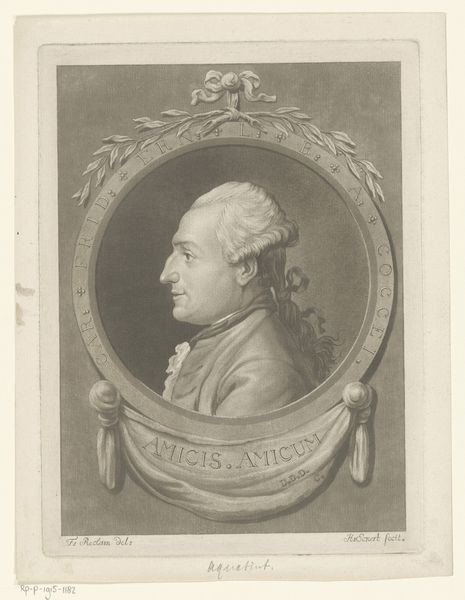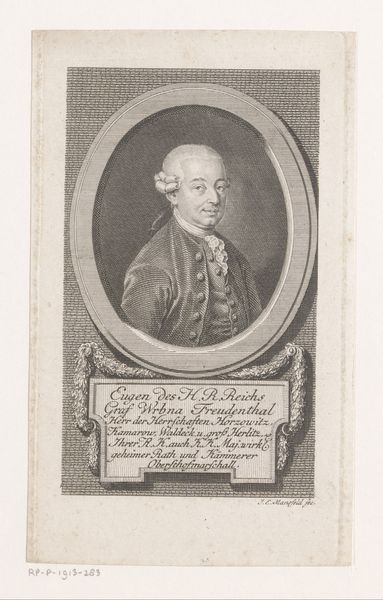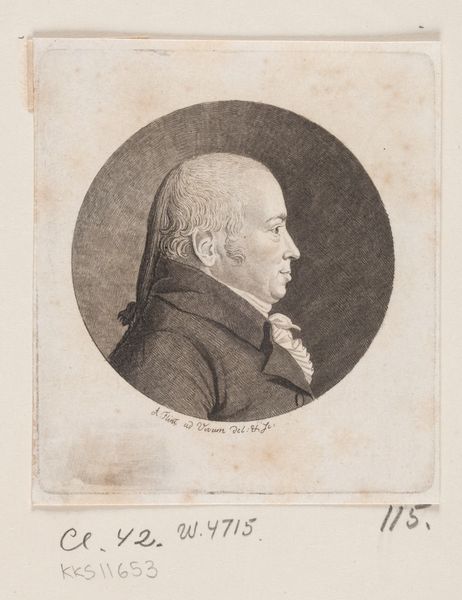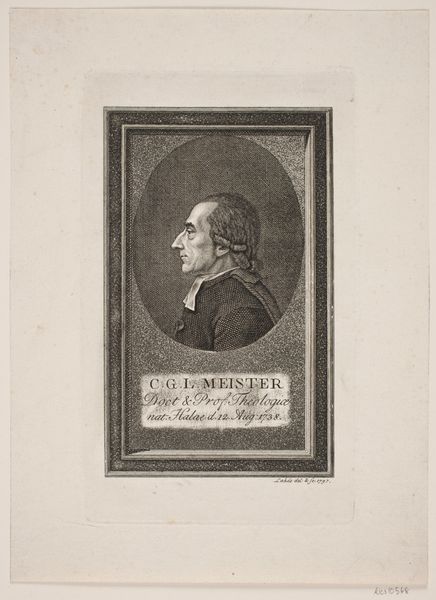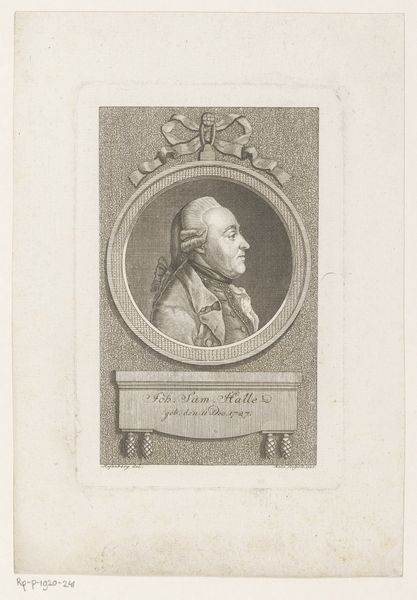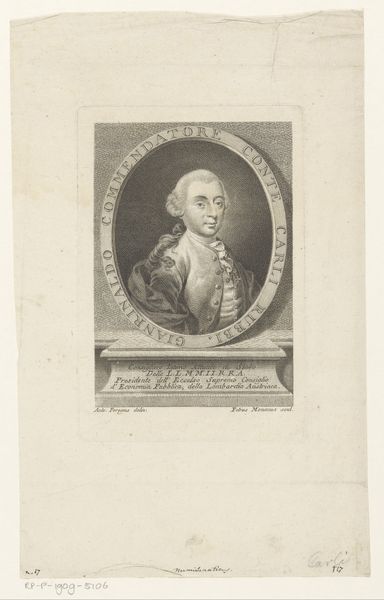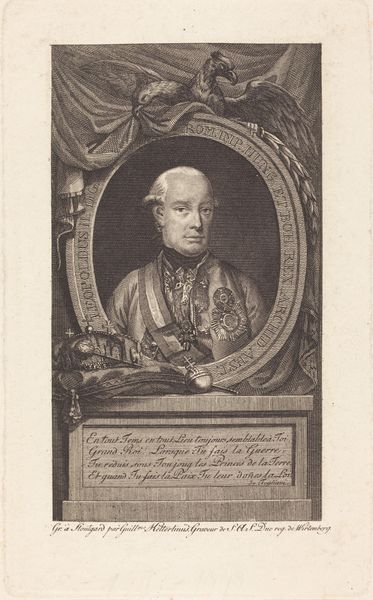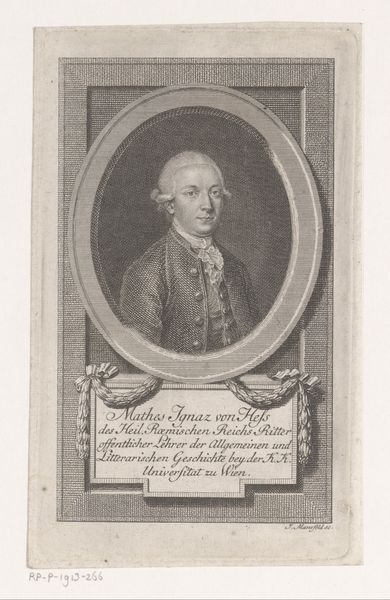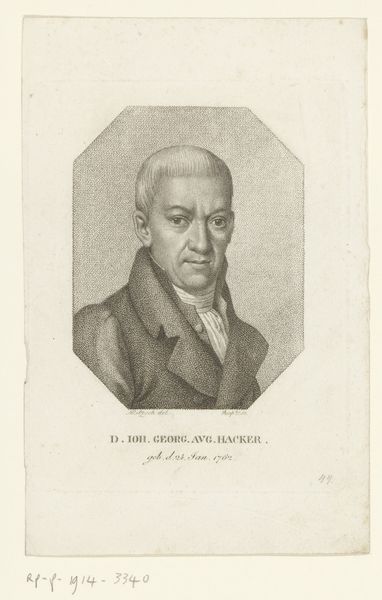
Dimensions: height 159 mm, width 100 mm
Copyright: Rijks Museum: Open Domain
Curator: Here at the Rijksmuseum, we're looking at a piece titled "Portret van Johann Christoph Andreas Mayer," an engraving created sometime between 1760 and 1813. Editor: It strikes me as incredibly precise, almost photographic despite the obvious handiwork. There’s a formality and constraint to it, very much of its time. Curator: What's interesting is the process involved. Engraving, especially at this level of detail, was incredibly labor-intensive. Each line was meticulously carved into a metal plate. The resulting print signifies reproducibility but emerges out of extensive singular labour. Editor: Absolutely. And if you look closer at those lines, notice how they form the shapes of his face and garments. The light and shadow play across his features is entirely constructed from this dense network of etched lines. What stories they could tell about how Mayer was regarded, his position, and aspirations in the eyes of the Prussian society! The very conscious selection of presenting him in profile! Curator: Indeed, engravings such as this became increasingly common as they were a popular method to disseminate information and represent individuals, especially within scientific and intellectual circles. Johann Christoph Andreas Mayer, identified within the plate as Royal Prussian Privy Councilor and Personal Physician and Professor of Botany and Materia Medica in Berlin. The plate indicates he was born in Greifswald, so it really emphasizes his upward mobility, if we think about prints as carriers of that sort of status information. Editor: Yes, this form carries embedded value and significance. Even the oval frame – that classical reference—speaks to his education and the Enlightenment values. It's almost as if the print aims to encapsulate his entire social persona through a series of culturally-coded symbols. The engraver understood these cues and reproduced them knowingly. Curator: Seeing his status so literally etched in his face like that… I was mainly appreciating the craftsman involved, their level of involvement into making these things into something so visually stimulating, while so practically distributed. I suppose we both ended up noticing a similar sentiment within this image. Editor: In the end, it all tells us not just about a man, but about the system that shaped him, and about those hands who carefully recreated his likeness.
Comments
No comments
Be the first to comment and join the conversation on the ultimate creative platform.
